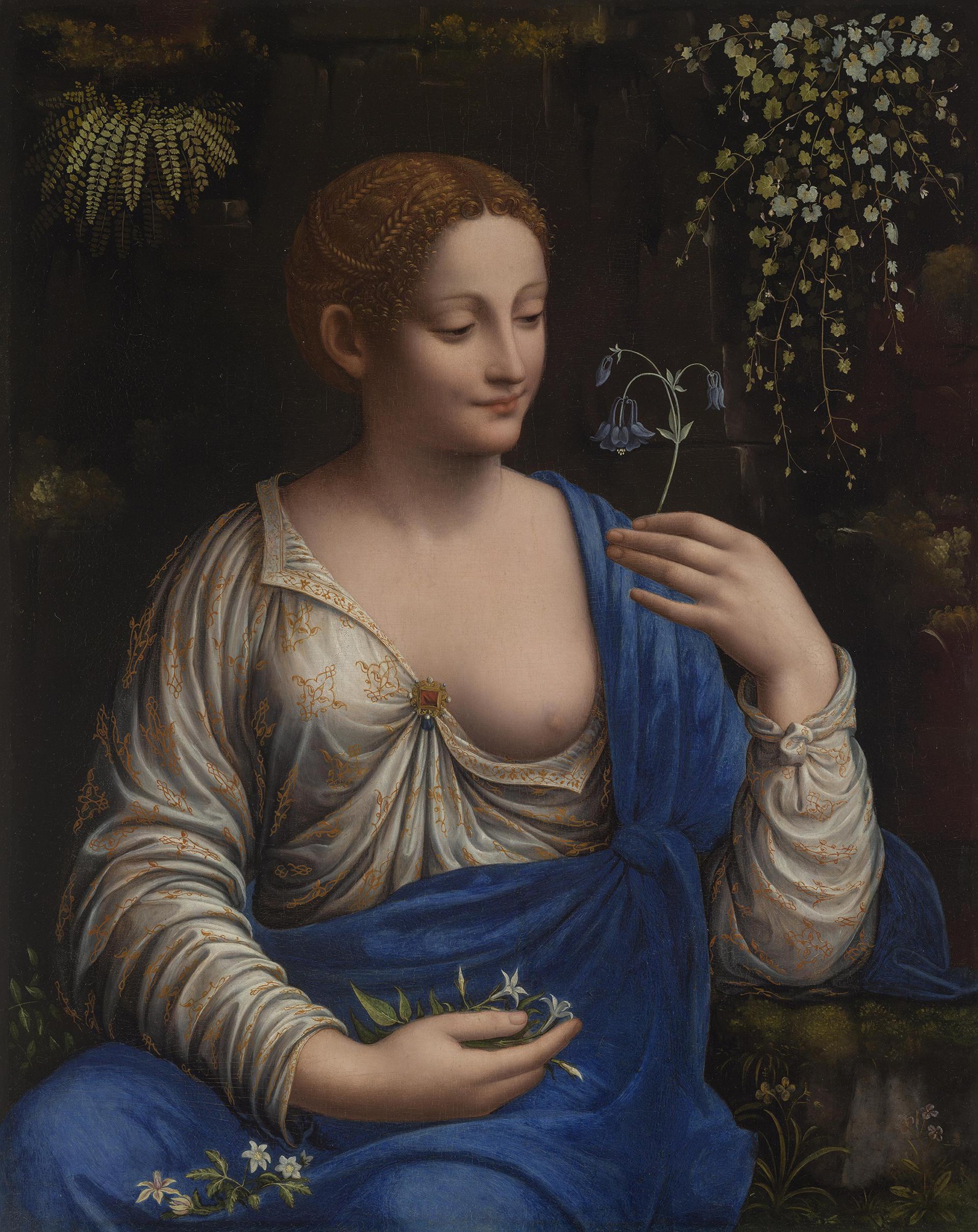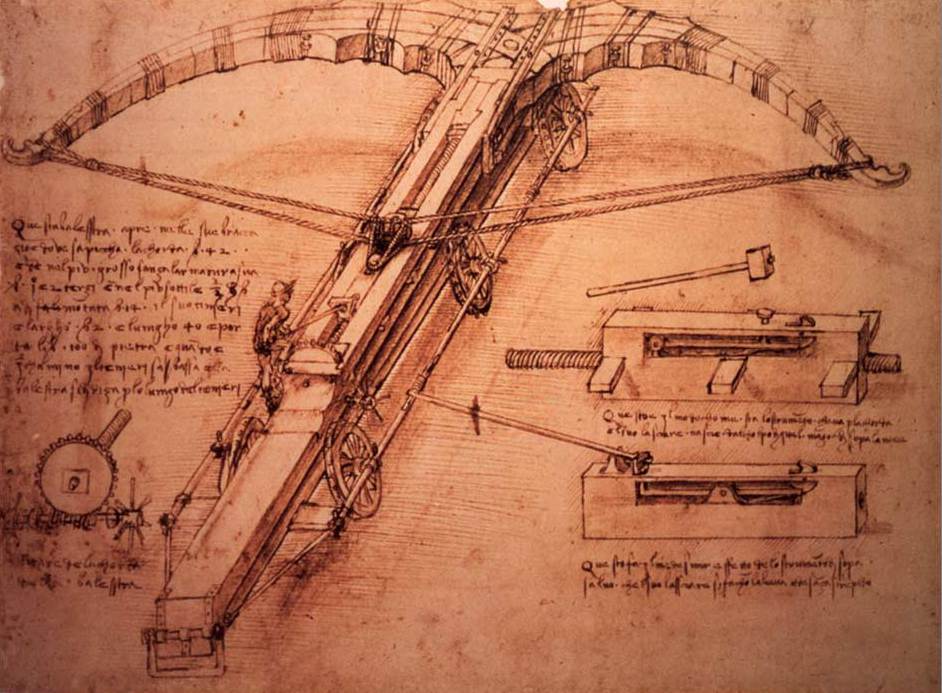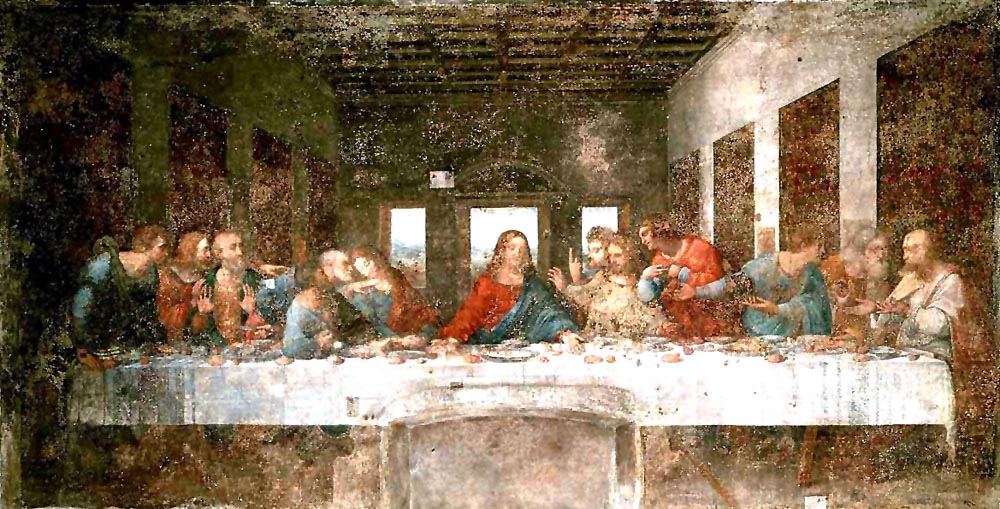|
The Virgin And Child With St Anne And St John The Baptist
''The Virgin and Child with Saint Anne and Saint John the Baptist'', sometimes called ''The Burlington House Cartoon'', is a drawing by Leonardo da Vinci. The drawing is in charcoal and black and white chalk, on eight sheets of paper that are glued together. Because of its large size and format the drawing is presumed to be a cartoon for a painting. No painting by Leonardo exists that is based directly on this cartoon, although the drawing may have been in preparation for a now lost or unexecuted painting commissioned by Louis XII. The drawing is the only extant larger-scale drawing by the artist. The drawing depicts the Virgin Mary seated on the thigh of her mother, Saint Anne, while holding the Christ Child as Christ's young cousin, John the Baptist, stands to the right. It currently hangs in the National Gallery in London. It was executed either around 1499–1500, at the end of the artist's first Milanese period, or around 1506–1508, when he was travelling back and forth be ... [...More Info...] [...Related Items...] OR: [Wikipedia] [Google] [Baidu] |
Leonardo Da Vinci
Leonardo di ser Piero da Vinci (15 April 14522 May 1519) was an Italian polymath of the High Renaissance who was active as a painter, draughtsman, engineer, scientist, theorist, sculptor, and architect. While his fame initially rested on his achievements as a painter, he also became known for his notebooks, in which he made drawings and notes on a variety of subjects, including anatomy, astronomy, botany, cartography, painting, and paleontology. Leonardo is widely regarded to have been a genius who epitomized the Renaissance humanist ideal, and his collective works comprise a contribution to later generations of artists matched only by that of his younger contemporary, Michelangelo. Born out of wedlock to a successful notary and a lower-class woman in, or near, Vinci, he was educated in Florence by the Italian painter and sculptor Andrea del Verrocchio. He began his career in the city, but then spent much time in the service of Ludovico Sforza in Milan. Later, ... [...More Info...] [...Related Items...] OR: [Wikipedia] [Google] [Baidu] |
Magnificat
The Magnificat (Latin for " y soulmagnifies he Lord) is a canticle, also known as the Song of Mary, the Canticle of Mary and, in the Byzantine tradition, the Ode of the Theotokos (). It is traditionally incorporated into the liturgical services of the Catholic Church, the Eastern Orthodox churches, and the Anglican Communion. Its name comes from the incipit of the Latin version of the text. The text of the canticle is taken from the Gospel of Luke () where it is spoken by Mary upon the occasion of her Visitation to her cousin Elizabeth. In the narrative, after Mary greets Elizabeth, who is pregnant with John the Baptist, the latter moves within Elizabeth's womb. Elizabeth praises Mary for her faith (using words partially reflected in the Hail Mary), and Mary responds with what is now known as the Magnificat. The Magnificat is one of the eight most ancient Christian hymns and perhaps the earliest Marian hymn. Within the whole of Christianity, the canticle is most frequent ... [...More Info...] [...Related Items...] OR: [Wikipedia] [Google] [Baidu] |
Francesco Melzi
Francesco Melzi, or Francesco de Melzi (1491–1570), was an Italian painter born into a family of the Milanese nobility in Lombardy. He became a pupil of Leonardo da Vinci and remained as his closest professional assistant throughout his career. After da Vinci's death he became the literary executor of all da Vinci's papers, editing them into a manuscript on painting he published as ''Tratatto della Pittura'' reatise on Paintingor a compilation entitled the '' Codex Urbinas''. Early life and training Francesco's father, Gerolamo Melzi, was an engineer for Francesco II Sforza's military, and a captain in the militia in Milan under Louis XII. Francesco lived with his family in the Villa Melzi in Vaprio d'Adda (not to be confused with the Villa Melzi d'Eril in Bellagio, Lombardy), which today is still under the ownership of the Dukes Melzi d'Eril. Francesco grew up in the Milanese court, and was raised with proper manners and was granted a good education, whi ... [...More Info...] [...Related Items...] OR: [Wikipedia] [Google] [Baidu] |
Pomona (mythology)
Pomona (, ) was a goddess of fruitful abundance in ancient Roman religion and myth. Her name comes from the Latin word ''pomum'', "fruit", specifically orchard fruit. Pomona was said to be a wood nymph. Etymology The name ''Pōmōna'' is a derivation from Latin ''pōmus'' ('fruit-tree, fruit'), possibly stemming from Proto-Italic ''*po-e/omo'' ('taken off, picked?'), cognate with Umbrian Puemune, ultimately from Proto-Indo-European ''*h₁e/omo'' ('what is (to be) taken'). Mythology In the myth narrated by Ovid, she scorned the love of the woodland gods Silvanus and Picus, but married Vertumnus after he tricked her, disguised as an old woman. She and Vertumnus shared a festival held on August 13. Her priest was called the ''flamen Pomonalis''. The pruning knife was her attribute. There is a grove that is sacred to her called the ''Pomonal'', located not far from Ostia, the ancient port of Rome. Pomona was the goddess of fruit trees, gardens, and orchards. Unlike many oth ... [...More Info...] [...Related Items...] OR: [Wikipedia] [Google] [Baidu] |
Biblioteca Ambrosiana
The Biblioteca Ambrosiana is a historic library in Milan, Italy, also housing the Pinacoteca Ambrosiana, the Ambrosian art gallery. Named after Ambrose, the patron saint of Milan, it was founded in 1609 by Cardinal Federico Borromeo, whose agents scoured Western Europe and even Greece and Syria for books and manuscripts. Some major acquisitions of complete libraries were the manuscripts of the Benedictine monastery of Bobbio (1606) and the library of the Paduan Vincenzo Pinelli, whose more than 800 manuscripts filled 70 cases when they were sent to Milan and included the famous ''Iliad'', the '' Ilias Picta''. History During Cardinal Borromeo's sojourns in Rome, 1585–95 and 1597–1601, he envisioned developing this library in Milan as one open to scholars and that would serve as a bulwark of Catholic scholarship in the service of the Counter-Reformation against the treatises issuing from Protestant presses. To house the cardinal's 15,000 manuscripts and twice that many p ... [...More Info...] [...Related Items...] OR: [Wikipedia] [Google] [Baidu] |
Bernardino Luini
Bernardino Luini (c. 1480/82 – June 1532) was a north Italian painter from Leonardo's circle during the High Renaissance. Both Luini and Giovanni Antonio Boltraffio were said to have worked with Leonardo directly; he was described as having taken "as much from Leonardo as his native roots enabled him to comprehend". Consequently, many of his works were attributed to Leonardo. He was known especially for his graceful female figures with elongated eyes, called Luinesque by Vladimir Nabokov. Biography Luini was born as Bernardino de Scapis in Runo, a ''frazione'' of Dumenza, near Lake Maggiore. Details of his life are scant. In 1500 he moved to Milan with his father. According to Lomazzo, he trained under Giovan Stefano Scotto, although for others he was a pupil of Ambrogio Bergognone. In 1504-1507 he was probably in Treviso, as attested by a ''Madonna with Child'' signed ''Bernardinus Mediolanensis faciebat'' which is however of disputed attribution. His first fresco works ... [...More Info...] [...Related Items...] OR: [Wikipedia] [Google] [Baidu] |
Vertumnus And Pomona (Francesco Melzi) In 2019 , a goddess of fruitful abundance in Roman mythology
{{Disambiguation ...
''Vertumnus and Pomona'' may refer to: * ''Vertumnus and Pomona'' (Claudel), a 1905 sculpture by Camille Claudel * ''Vertumnus and Pomona'' (Melzi), a painting by Francesco Melzi completed c. 1518–1522 * ''Vertumnus and Pomona'' (Pontormo), a fresco painted by Jacopo Pontormo in the Medici country villa at Poggio a Caiano, Tuscany, Italy See also * Vertumnus, the god of seasons, change, and plant growth in Roman mythology * Pomona (mythology) Pomona (, ) was a goddess of fruitful abundance in ancient Roman religion and myth. Her name comes from the Latin word ''pomum'', "fruit", specifically orchard fruit. Pomona was said to be a wood nymph. Etymology The name ''Pōmōna'' is a ... [...More Info...] [...Related Items...] OR: [Wikipedia] [Google] [Baidu] |
B Luini Sacra Famiglia Con S Giovannino S Anna Milano Ambrosiana
B, or b, is the second letter of the Latin-script alphabet, used in the modern English alphabet, the alphabets of other western European languages and others worldwide. Its name in English is ''bee'' (pronounced ), plural ''bees''. It represents the voiced bilabial stop in many languages, including English. In some other languages, it is used to represent other bilabial consonants. History Old English was originally written in runes, whose equivalent letter was beorc , meaning "birch". Beorc dates to at least the 2nd-century Elder Futhark, which is now thought to have derived from the Old Italic alphabets' either directly or via Latin . The uncial and half-uncial introduced by the Gregorian and Irish missions gradually developed into the Insular scripts' . These Old English Latin alphabets supplanted the earlier runes, whose use was fully banned under King Canute in the early 11th century. The Norman Conquest popularised the Carolingian half-uncial forms which la ... [...More Info...] [...Related Items...] OR: [Wikipedia] [Google] [Baidu] |
Louvre
The Louvre ( ), or the Louvre Museum ( ), is the world's most-visited museum, and an historic landmark in Paris, France. It is the home of some of the best-known works of art, including the ''Mona Lisa'' and the '' Venus de Milo''. A central landmark of the city, it is located on the Right Bank of the Seine in the city's 1st arrondissement (district or ward). At any given point in time, approximately 38,000 objects from prehistory to the 21st century are being exhibited over an area of 72,735 square meters (782,910 square feet). Attendance in 2021 was 2.8 million due to the COVID-19 pandemic, up five percent from 2020, but far below pre-COVID attendance. Nonetheless, the Louvre still topped the list of most-visited art museums in the world in 2021."The Art Newspaper", 30 March 2021. The museum is housed in the Louvre Palace, originally built in the late 12th to 13th century under Philip II. Remnants of the Medieval Louvre fortress are visible in the basem ... [...More Info...] [...Related Items...] OR: [Wikipedia] [Google] [Baidu] |
The Virgin And Child With Saint Anne (Leonardo)
''The Virgin and Child with Saint Anne'' is an unfinished oil painting by High Renaissance artist Leonardo da Vinci, dated to . It depicts Saint Anne, her daughter the Virgin Mary and the infant Jesus. Christ is shown grappling with a sacrificial lamb symbolizing his Passion as the Virgin tries to restrain him. The painting was commissioned as the high altarpiece for the Church of Santissima Annunziata in Florence and its theme had long preoccupied Leonardo. History It is likely that the painting was commissioned by King Louis XII of France following the birth of his daughter Claude in 1499, but it was never delivered to him. Leonardo probed into incorporating these figures together by drawing the '' Burlington House Cartoon'' (National Gallery). In 2008, a curator at the Louvre discovered several faint sketches believed to have been made by Leonardo on the back of the painting. Infrared reflectography was used to reveal a "7-by-4 inch drawing of a horse's head", which h ... [...More Info...] [...Related Items...] OR: [Wikipedia] [Google] [Baidu] |
Saint John The Baptist (Leonardo)
''Saint John the Baptist'' is a High Renaissance oil painting on walnut wood by Leonardo da Vinci. Likely to have been completed between 1513 and 1516, it is believed to be his final painting. Its original size was . The painting is in the collection of the Louvre. In November 2022, it was loaned to Louvre Abu Dhabi for two years as part of the museum's fifth anniversary. Subject matter The work depicts the figure of John the Baptist in isolation through the use of chiaroscuro, with the figure appearing to emerge from the shadowy background. The saint is dressed in furs, has long curly hair and is smiling in an enigmatic manner reminiscent of Leonardo's famous '' Mona Lisa''. He holds a reed cross in his left hand, while his right hand points up toward heaven, similar to the figure of Saint Anne in Leonardo's '' Burlington House Cartoon''. According to Frank Zöllner, Leonardo's use of sfumato "conveys the religious content of the picture", with the "gentle shadows mb ... [...More Info...] [...Related Items...] OR: [Wikipedia] [Google] [Baidu] |
Last Supper (Leonardo)
''The Last Supper'' ( it, Il Cenacolo or ) is a mural painting by the Italian High Renaissance artist Leonardo da Vinci, dated to . The painting represents the scene of the Last Supper of Jesus with the Twelve Apostles, as it is told in the Gospel of Johnspecifically the moment after Jesus announces that one of his apostles will betray him. Its handling of space, mastery of perspective, treatment of motion and complex display of human emotion has made it one of the Western world's most recognizable paintings and among Leonardo's most celebrated works. Some commentators consider it pivotal in inaugurating the transition into what is now termed the High Renaissance. The work was commissioned as part of a plan of renovations to the church and its convent buildings by Leonardo's patron Ludovico Sforza, Duke of Milan. In order to permit his inconsistent painting schedule and frequent revisions, it is painted with materials that allowed for regular alterations: tempera o ... [...More Info...] [...Related Items...] OR: [Wikipedia] [Google] [Baidu] |

.jpg)






